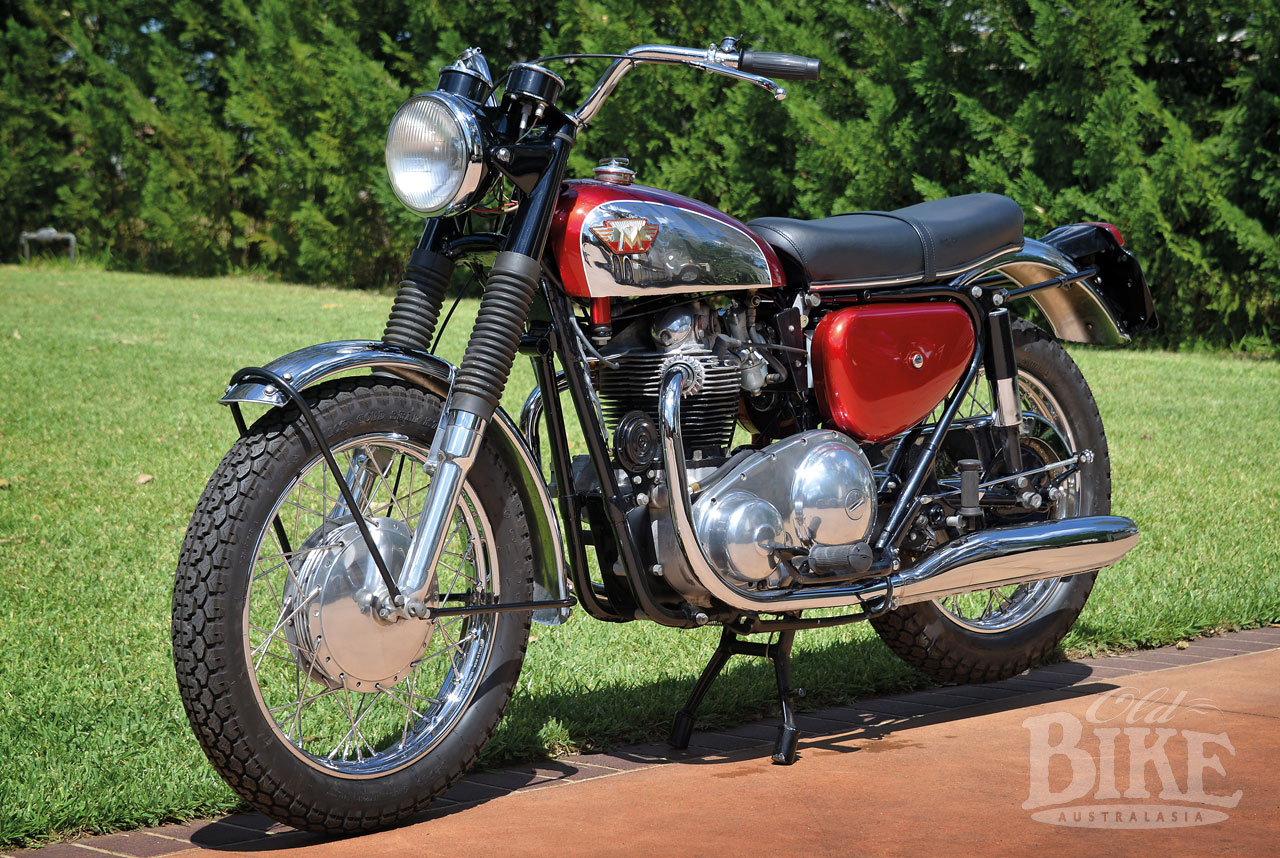- Joined
- Sep 15, 2020
- Messages
- 396
It's inspiring to me when a project starts to resemble a motorcycle, so I set the two tanks on for a look. Not original but I like it. I just pressed in the swingarm pin in and threw on some old SuzukiGS850 (13.4") shocks for garage purpose. The oil tank was painted directly, not on the cover, oh well.
The project has been an archeology puzzle, what fitting/bracket/bolt goes where and what do I have? Turns out I have most of it, and in pretty nice shape to boot. I've scoured pics high and low. I found pics of some crusty old frames that turned out to be quite helpful. I still don't know a few things, like where does the ignition switch go? I have a wiring harness with it, and and have seen it hung off the rear frame loop to main frame upper stud with a bracket, but am not sure if that's original location. That seems to be where the wiring harness puts it anyway. There's a tapped hole for 'something' on that stud, but I don't know what goes in it. Anyone?


The project has been an archeology puzzle, what fitting/bracket/bolt goes where and what do I have? Turns out I have most of it, and in pretty nice shape to boot. I've scoured pics high and low. I found pics of some crusty old frames that turned out to be quite helpful. I still don't know a few things, like where does the ignition switch go? I have a wiring harness with it, and and have seen it hung off the rear frame loop to main frame upper stud with a bracket, but am not sure if that's original location. That seems to be where the wiring harness puts it anyway. There's a tapped hole for 'something' on that stud, but I don't know what goes in it. Anyone?

